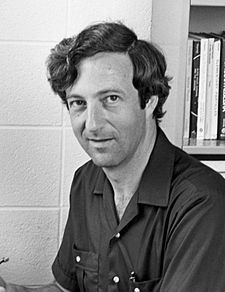Institutions CornellCaltech | Name Saul Teukolsky | |
 | ||
Born August 2, 1947 (age 78) Johannesburg ( 1947-08-02 ) Fields AstrophysicsNumerical relativity Alma mater University of the WitwatersrandCaltech Awards Guggenheim Fellowship for Natural Sciences, US & Canada Books Numerical Recipes in C: The Art, Numerical Recipes 3rd Editio, Numerical Recipes in FORTRA, Numerical Recipes Multi‑Lan, Numerical Recipes in Fortran 9 Similar People William H Press, Kip Thorne, Andrew Dickson White | ||
Numerical relativity saul teukolsky
Saul A. Teukolsky (born August 2, 1947) is a theoretical astrophysicist and a professor of Physics and Astronomy at Caltech and Cornell University. His major research interests include general relativity, relativistic astrophysics, and computational astrophysics.
Contents
- Numerical relativity saul teukolsky
- Kerr conference saul teukolsky numerical simulations of the mergers of black holes
- Biography
- References
Kerr conference saul teukolsky numerical simulations of the mergers of black holes
Biography
Teukolsky received a Bachelor of Science in Honors Physics and Honors Applied Mathematics from the University of the Witwatersrand, South Africa in 1970. He went on to be a graduate student under Kip Thorne at Caltech where he received his Ph.D. in 1973. He returned to Cornell as an Assistant Professor of Physics and Astronomy in 1974 after serving as the Richard Chace Tolman Research Fellow for one year at Caltech. He was promoted to Associate Professor in 1977 and Full Professor in 1983. In 1999 he was named the Hans A. Bethe professor of physics and astrophysics, a position which he still holds. In 2003 he was elected to the National Academy of Sciences.
Teukolsky is one of the pioneers of numerical relativity: the subject that deals with equations involving general relativity using supercomputers. He is a coauthor of the Numerical Recipes series of books on scientific computing. Today his research group works on numerical relativity calculations to predict signals from the LIGO and LISA experiments.
